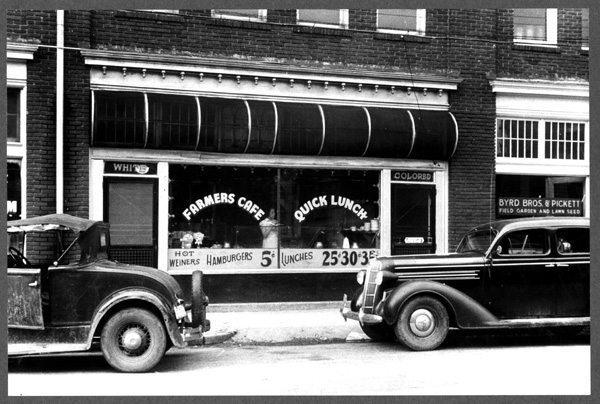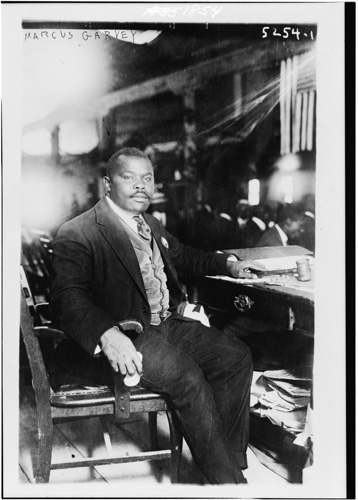Introduction
A cafe in the warehouse district with separate doors for "White" and "Colored".
Source: Jack Delano, May 1940, Library of Congress Prints and Photographs Division, Washington, DC.
The teaching of Black history has generally been grounded between two historic struggles: The Civil War/Reconstruction and the Modern Civil Rights Movement. In many textbooks, it is as if the quest for African American freedom is put on pause for nearly a century. This module seeks to enrich the history of African American protest and organization building within the first half of the twentieth century. This module emphasizes the impact of an oppressive Jim Crow segregation on every aspect of people’s lives and the processes that maintained de facto segregation in the North. However, as the African American experience has been one defined by resistance, the module highlights both political and cultural movements that worked against these great forces of repression.
Marcus Garvey, August 5, 1924.
Source: August 5, 1924, Library of Congress Prints and Photographs Division, Washington, DC.
The interwar period in the United States wrought great changes for African Americans. Before World War One, the majority of black people lived in the South; by World War Two, nearly a full third of the African American population lived in the North and West. These demographic shifts created not just new communities, but new ideas and political motivations. The de facto segregation in Northern cities inevitably created communities like Harlem, which in turn, produced a working collective of artists, musicians and writers whose art would challenge white notions of supremacy. Also in Harlem, new leaders like Marcus Garvey challenged ideas of gradual integration, instead pushing for Black Nationalism and Pan-African ideas about black unity. Within these new networks, organizations like the legal defense arm of the NAACP began a tireless battle systematically attacking local segregation one case after another. It is important to understand the way these migrations shaped and fostered political communities, a theme intrinsic in American history, as well as the way these political communities shaped future social movements. Students should find connections in the ideas and strategies being developed within this era and understand that resistance is continuous, even as the arenas for waging it change.
With the United States becoming a global force through World War Two and the Cold War, the African American freedom movement took on new meanings and significance. Amidst Nazism, Stalinism and Japanese internment, as well as the exclusion of many third world immigrants, the unfulfilled promise of American democracy loomed heavy. Thus, the Black Freedom movement can highlight larger themes in American history including the dynamics of inclusion and exclusion, meanings of equality, and ideas on justice. Students should come away from this unit with an understanding of the way in which people struggled against repressive conditions of segregation, discrimination and brutality, as well as how this struggle has shaped their own lives.
Related Resources
The Fundamental Tension of African American History.
CUNY professor Leith Mullings discusses the importance of understanding the balance between oppression and resistance when describing African American history. Source: Columbia University.





